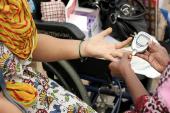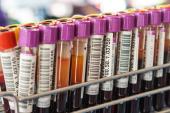ASCVD Risk in South Asians Far Exceeds Forecasts by Common Scores
It’s well-known that South Asian heritage needs to be “mentally added” to risk equations. That doesn’t go far enough.

The predicted 10-year risk of cardiovascular disease among participants in the UK Biobank study, calculated using internationally accepted tools, was nearly identical for people of South Asian and European ancestry, but actual event rates over a decade of follow-up reveal that South Asians, in fact, experienced nearly twice as many events.
The findings, say the authors of a new study, expose how woefully inadequate the American Heart Association/American College of Cardiology Pooled Cohort Equations (PCE) and QRISK3 equations are for accurately assessing CV risk in South Asians.
“Within a large prospective study, South Asian individuals had substantially higher risk of atherosclerotic cardiovascular disease compared with individuals of European ancestry, and this risk was not captured by the PCE,” write Aniruddh P. Patel, MD (Massachusetts General Hospital, Boston, MA), and colleagues in a study published online in Circulation today.
Senior author Amit V. Khera, MD (Massachusetts General Hospital), speaking with TCTMD, explained that South Asian heritage was not considered when the scores were devised. At the root of these scores are studies with almost entirely white cohorts that enrolled patients in the 1980s and ‘90s.
A separate tool has since been validated, with revisions and caveats, in Black patients, but race is not itself incorporated into the equation, said Khera.
“They're two totally separate equations: one's for Black people and one is for non-Black people. It’s kind of a crazy place that we've ended up in,” he said. South Asian heritage has been recognized as an add-on that needs to be taken into account by clinicians, but it hasn’t been quantified or formalized in the tools, he added. “Our study basically shows that risk in South Asians is more than double, and that risk is not captured. We have some clues about what's driving it, but there's a lot that remains to be explored.”
Predicted vs Actual Risk
In all, 8,124 people of South Asian descent participated in the prospective UK Biobank study along with 449,349 subjects of European ancestry, all free of atherosclerotic cardiovascular disease (ASCVD) at the outset. Predicted 10-year risk by PCE, adjusted for baseline differences, was 8.3% and 7.5% for South Asian and European ancestry participants, respectively (a 1.1-fold difference). By QRISK3, the predicted event rates were 13.7% and 9.6%, respectively (a 1.4-fold difference). Ultimately, however, the actual event rates at a median follow-up of 11 years were 4.4% in the European cohort and 6.8% in those of South Asian heritage, yielding an adjusted hazard ratio of 2.03 (95% CI 1.86-2.22).
Further analyses modestly attenuated, but didn’t eliminate, the difference. Hypertension, diabetes, and central adiposity appeared to be particularly important risk factors among subjects with South Asian ancestry, although prevalence varied according to country of origin. People of Bangladeshi and Pakistani descent, for example, appeared to be at higher risk than those from another South Asian country of origin.
Khera points out that much has changed in both the risk factors for and management of ASCVD since many of the (mostly white) longitudinal studies were first launched. Major strides have been made in cholesterol control and smoking cessation, but obesity and diabetes are now much more common in the US population. Whether that shift has had any effects in leveling the playing field or—conversely—making risk differences more stark between groups of different origins is unclear.
“I think going in, I was probably a little bit skeptical that the magnitude of increased risk was as high as it is based on some of the previous studies that have been done,” said Khera. “One question was just how much higher is the risk [in South Asians] in the context of contemporary care, where we're giving things like statins and blood pressure medicine all the time, because there's reason to believe that that would actually have been attenuated.”
It’s unknown how age, sex, and heritage factor into the mix, and whether country of birth or residence versus race/ethnicity has an impact, he said. A shortcoming of the current study, Khera added, is that the UK Biobank enrolled people living in the United Kingdom.
And while diabetes, central adiposity, and hypertension were confirmed to be important risk factors in South Asian patients, they don’t fully explain the disparity, the authors stress. Other factors, such as frequency of interactions with healthcare professionals, delayed diagnoses, undertreatment of comorbidities, genetic variation, or “as-yet unidentified or unmeasured factors,” may all play a role.
Other work by Khera and colleagues is exploring the use of machine learning and imaging tools to probe things like liver fat and body fat distribution, which may help to illuminate reasons for risk difference, Khera noted. Polygenic risk scores may also help to personalize risk levels, although studies looking at the additive benefit of these scores have so far yielded mixed results.
For now, says Khera, the clinical takeaway from this study should be a “doubling down” on acknowledging that South Asian heritage in and of itself is a risk factor. “Even in contemporary care, these are very high-risk individuals, and these risk estimators, even if you multiply results by 1.5, are still not going to fully capture the risk.” Preventive medicine likely needs to be more aggressive in these patients, he said, pointing also to the need to increase enrollment of people of South Asian heritage into future studies.
Many Unknowns
Indeed, Namratha R. Kandula, MD, MPH (Northwestern University Medical Center, Chicago, IL), and Alka M. Kanaya, MD (University of California, San Francisco), note in an accompanying editorial, people of South Asian origin make up nearly one-quarter of the world’s population but are starkly underrepresented in clinical studies. Even in the UK Biobank study, South Asians made up just 1.8% of the total. “Future studies should enroll adequate samples to disaggregate South Asian subgroups and utilize a conceptual framework-driven approach to articulate and understand mechanisms that link drivers of cardiovascular health at the contextual, interpersonal, and individual level,” they write.
Commenting on the study for TCTMD, Ali Aldujeli, MD (Lithuanian University of Health Sciences, Kaunas), observed that while cardiologists have known for some time that South Asian patients are at higher risk for events, the magnitude of that increased risk has been unclear.
“This study [should] raise the alarm to restratify Asian patients as a very high-risk group,” Aldujeli said in an email. On the basis of these data, “I feel safer initiating preventive therapies earlier for my Asian patients.”
Moreover, he continued, “we might need to reform and investigate our traditional risk scores, such as GRACE, TIMI, SYNTAX II, and other scores, to include the [South] Asian population as a variable enhancing the possibility of CVD.”
Shelley Wood was the Editor-in-Chief of TCTMD and the Editorial Director at the Cardiovascular Research Foundation (CRF) from October 2015…
Read Full BioSources
Patel AP, Wang M, Karoun U, et al. Quantifying and understanding the higher risk of atherosclerotic cardiovascular disease among Sout-h Asian individuals: results from the UK Biobank prospective cohort study. Circulation. 2021;Epub ahead of print.
Kandula NR, Kanaya AM. The South Asian enigma: solving a puzzle of global importance. Circulation. 2021;Epub ahead of print.
Disclosures
- Khera reports serving as a scientific advisor to Sanofi, The Medicines Company, Maze Pharmaceuticals, Navitor Pharmaceuticals, Verve Therapeutics, Amgen, Color, and Columbia University (National Institutes of Health); receiving speaking fees from Illumina, MedGenome, Amgen, and the Novartis Institute for Biomedical Research; and receiving sponsored research agreements from the Novartis Institute for Biomedical Research and IBM Research.
- Patel, the editorialists, and Aldujeli report no relevant conflicts of interest.





Comments